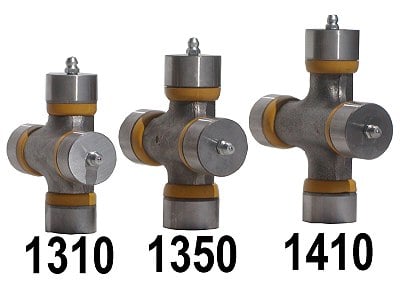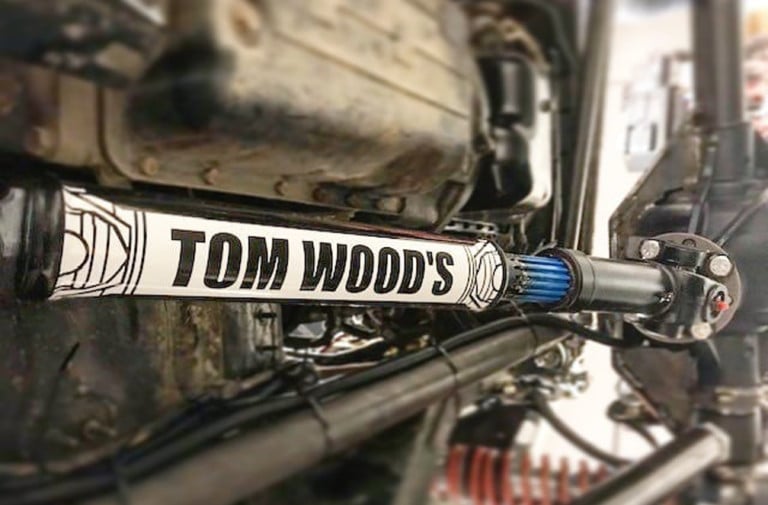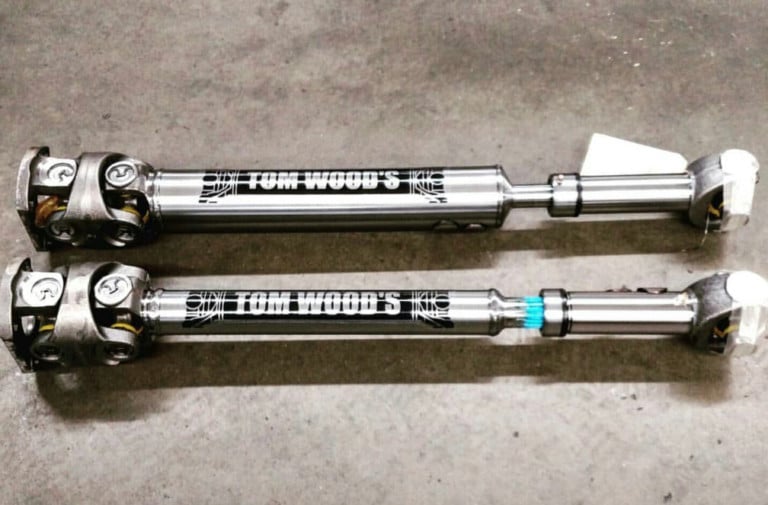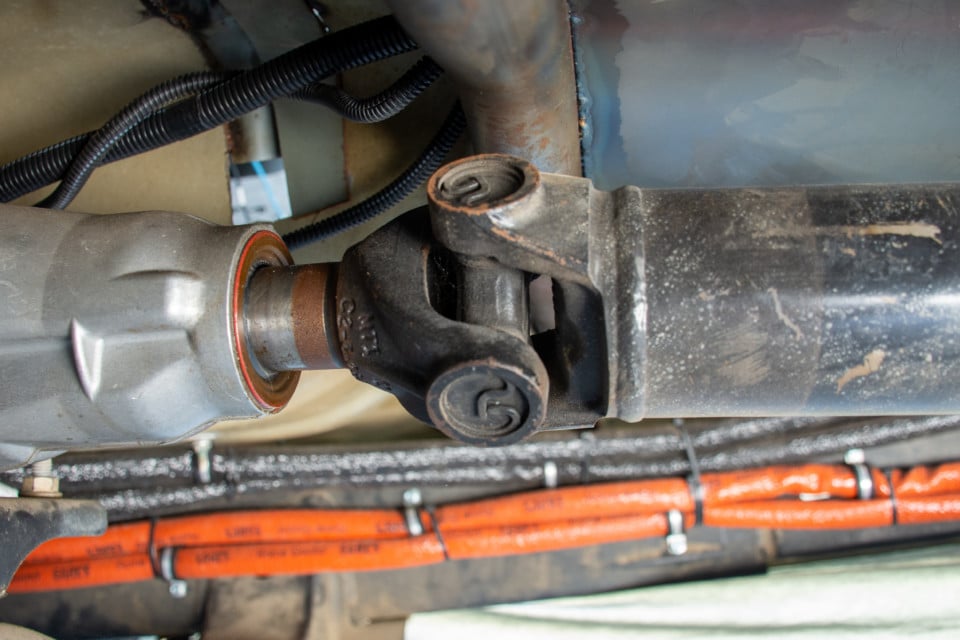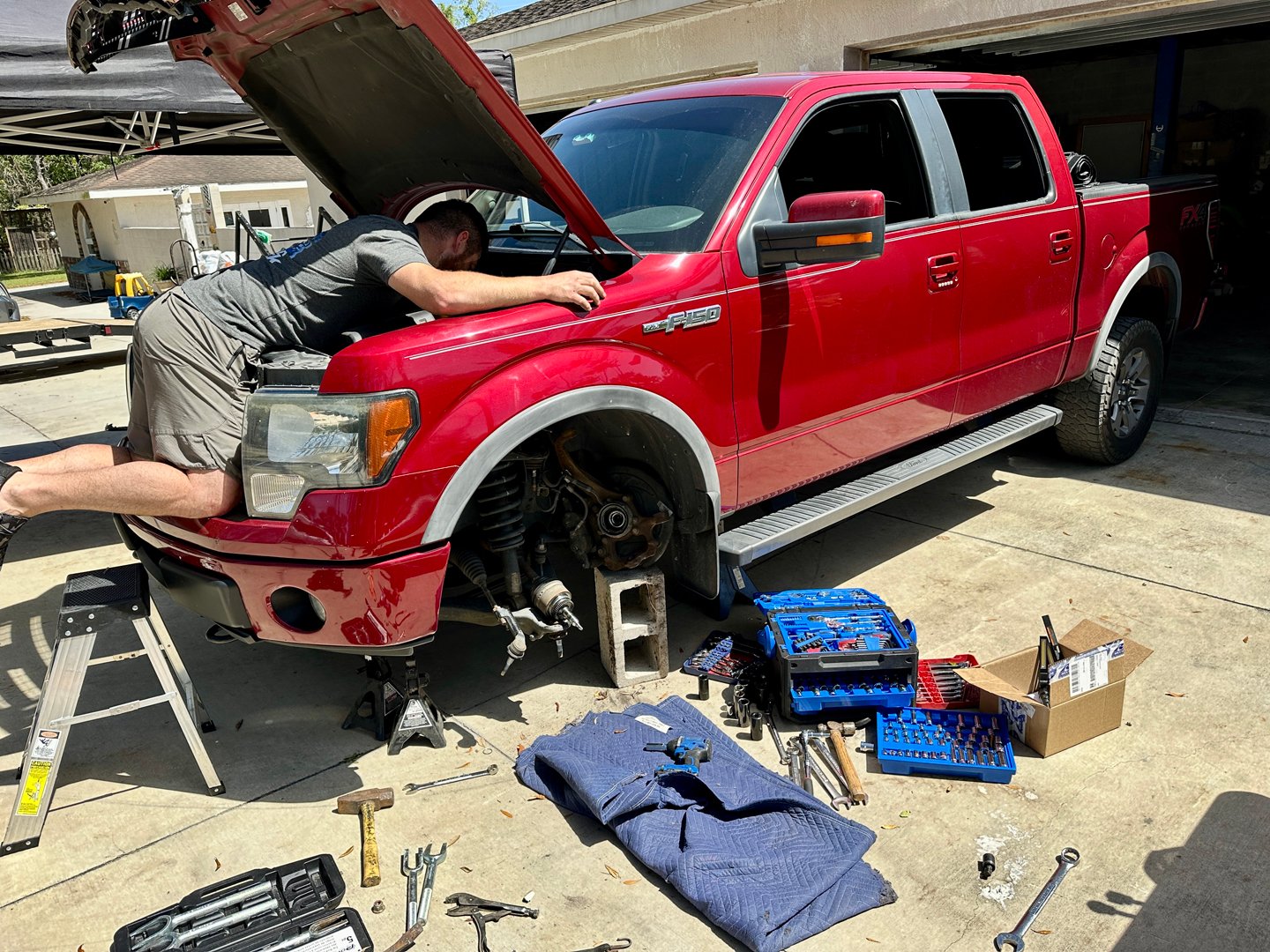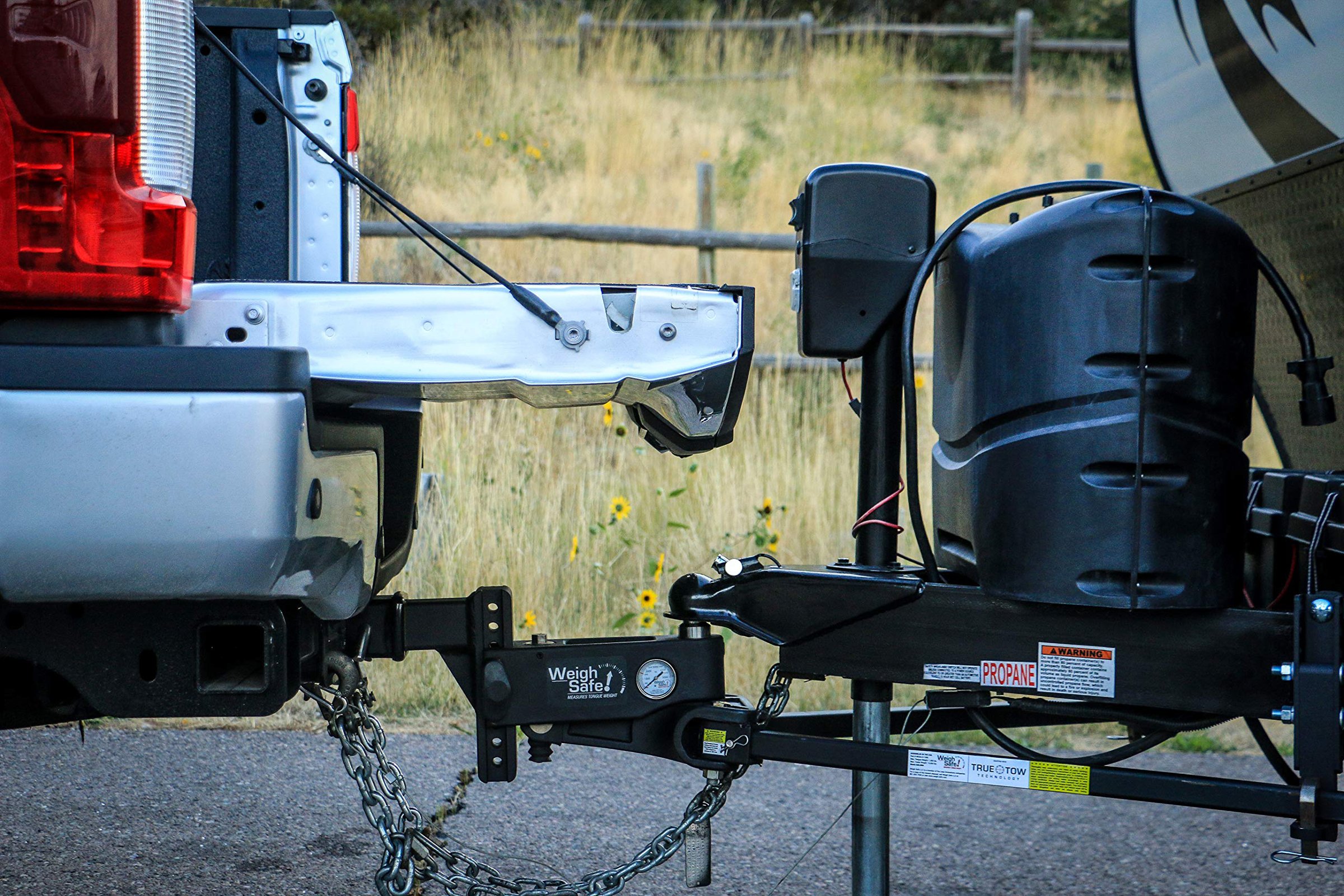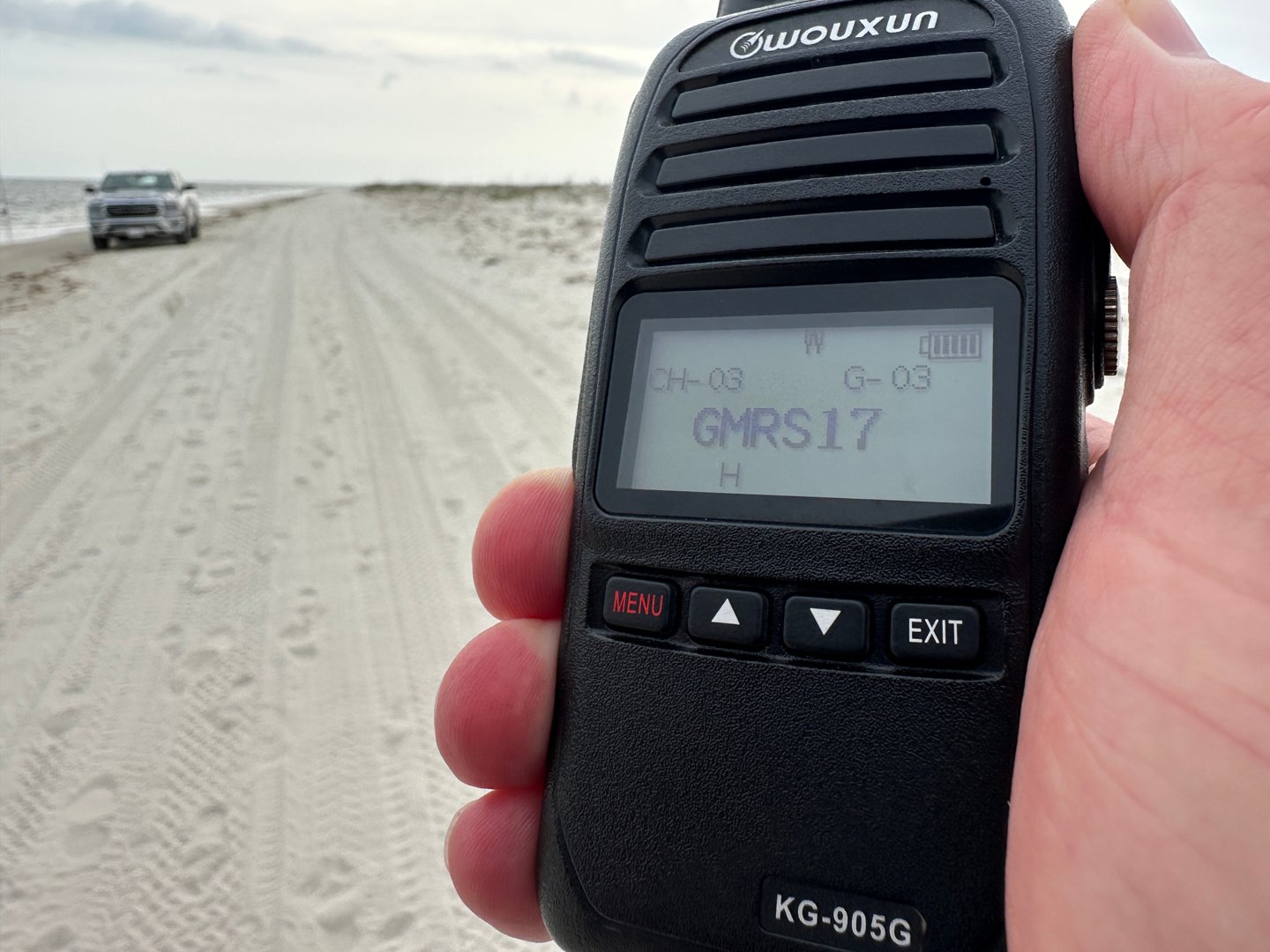We all know that it is lurking under our rigs, but most of us don’t know the ins and outs of our driveshaft or their components. We reached out to Shawn Wood of Tom Wood’s Custom Drive Shafts to get the low down on the 1350 U-joint and find out the pros and cons of the joint.
For this article, we will be comparing the 1350 series U-joint to the 1310 series U-Joint. In simple terms compared to the 1310 series, the 1350 series is stronger but can cost more and also lose flexibility in some cases. It may be as simple as that, but it is a lot more complicated when you look deeper.
“A 1350 series joint is a bigger stronger joint,” Woods explained. “This means that not only is the joint bigger, but the other components of the shaft will be larger and stronger as well. Relying on information provided by the manufacturer of the components, our calculation is that the 1350 series joint is about 37.5-percent stronger than the 1310 series. The 1350 U-joint is rated for 2,200 lb-ft (minimum elastic limit) of torque. While the 1310 series, the stock size for most Jeeps, is rated for 1,600 lb-ft of torque.”
When Should You Make The Switch
Now that we know how the 1350 series varies from the 1310 series, we need to find out when is it time to look at making the switch to a beefier U-joint. There are a number of factors to consider when looking at making the jump from a 1310 series to a 1350 series.
“When vehicle owners are running larger than 35-inch tires or when they have more than a couple of hundred horsepower is a good place to start looking at making the swap,” Woods explained. “There are many nuanced factors to consider though. Weight of the vehicle, tire diameter, gear ratio, angles, horsepower, the size and strength of the rest of the drive train, how hard someone is going to drive, and future plans are all factors we consider.”
Vehicle Weight: A four-door Jeep JK, loaded with people and gear weighs more than a YJ. It is just a bigger and heavier vehicle and more weight takes more effort to move. One thing people do not always consider is how many accessories they add. For people turning their build into an overland rig, it is not uncommon to add over 1,000 pounds worth of parts.
Tire Diameter: It is very common for people nowadays to be running 37-inch or larger tires on their Jeep or other off-road vehicles. Tires of this size are a lot larger than the stock diameter the vehicle came with and take more effort to turn and more effort to move the vehicle.
“You can think of the tire as a gear, maybe imagine a rack and pinion gear,” Woods explained. “In this case the tire is the pinion gear and the road is the rack. Changing the size of the pinion gear has an effect on the mechanical advantage and the required amount of force to move the vehicle. Big tires equal more force required, while small tires require less force.”
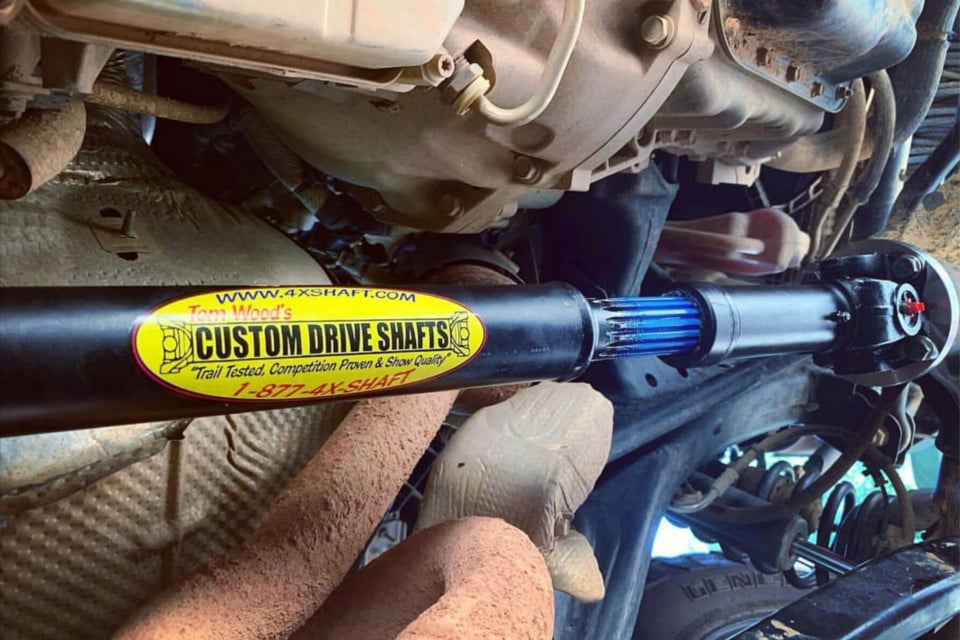
Customer installed driveshaft on a Jeep JKU. Photo Source: Ty Phillips
Gear Ratio: For this, we will be specifically talking about ring and pinion gear ratios in the differentials. For beginners, a 4.10 gear ration means that the drive shaft turns 4.1 times for every one rotation of the tires, while a 5.13 gear means that the drive shaft turns 5.13 times per tire rotation. This means that when switching from 4.10 to 5.13 the driveshaft and for that matter everything upstream of the ring gear have a 25-percent greater mechanical advantage. The driveshaft does the same job with less effort.
“I always use the analogy of riding a 10-speed bicycle,” Woods said. “Imagine yourself riding up a steep hill with a wimpy pedal that seems like it could break. If you are in 10th gear and you have to stand on the pedals to power yourself up the hill, you are likely to break the pedal. If you are in first gear and you have to move your legs really fast to stay moving forward, there will never be enough resistance to break the pedal. So when people are running very large tires with high gears, low numerically, it is like trying to ride that 10 speed uphill in 10th gear.”
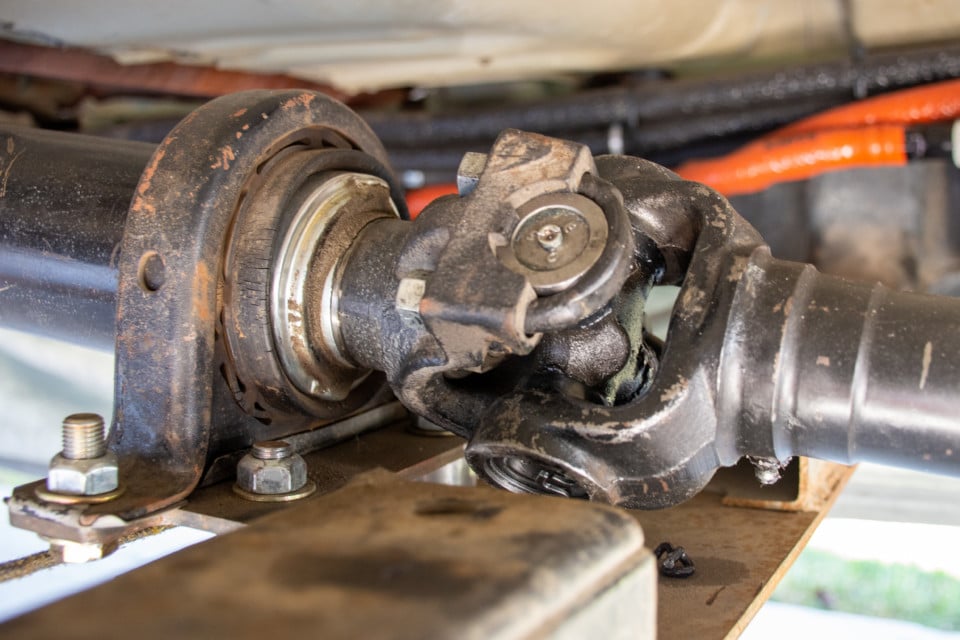
What type of angles will your driveshaft be exposed to? Will you need a one-piece or two-piece driveshaft? These are all things to consider when selecting what series U-joint to use.
Angles: A 1310 series joint will usually flex further than a 1350 series. So in short-wheelbase vehicles, the 1310 series is usually required. This is because of the length of the shaft and how dramatically the angle is affected by lift.
“Remember rise over run from high school math class,” Woods said. “A four-inch rise (lift height) over a 15-inch run (drive shaft) is going to equal a much greater angle than it would if it were a four-inch rise on a 30-inch run. Over-flexing and binding a shaft is going to break or damage it, no matter how strong the joints are. So when flexibility is more likely to become an issue than strength I choose flexibility, the 1310 series shaft.”
Horsepower: More horsepower on any vehicle may sound like a good thing, but for the rest of the vehicle it could spell disaster. More horsepower means it is easier to break things especially when the necessary steps aren’t taken to beef up the rest of the driveline components.
“Many newer vehicle models have quite a bit more horsepower than their predecessors,” Woods explained. “This means that what was sufficient before may not be enough anymore. This is made even worse when we throw in the popularity of superchargers, LS or Hemi swaps and the fact that what used to be almost unheard of amounts of power are now commonplace. We now live in a world where a 1,000 horsepower crate motor is a real thing.”
Drivetrain Strength: The driveshaft on a vehicle connects multiple components and it is those other components that need to be taken into consideration when selecting a driveshaft and U-joint size.
“If someone tells me that they have a Jeep CJ with an LS motor, a 205 transfer case, and Dana 60 axles, but that they want to order a 1310 series drive shaft, I will respond in the following manner, ‘1310 is the stock size for your vehicle, but this is far from being a stock CJ anymore,'” Woods said. “You have put a lot into making it stronger, it makes no sense to run the stock size drive shaft.”
“On the flip side, if someone is running a 231 transfer case with Dana 30 and 35 axles and they want a 1350 series drive shaft, I will say something like, ‘You will end up with a driveshaft that is stronger than your axles or transfer case. This will make you more likely to break your transfer case than a u-joint and that will be a much bigger problem to deal with out on a trail, in the middle of nowhere,'” Woods continued. “It is important to look at the relative size and strength of the rest of the drivetrain and to make sure that the driveshaft is not dramatically stronger or weaker than everything else. People will often talk about wanting the driveshaft to be their ‘fuse.’ This is fine, as long as you aren’t putting a 15 amp fuse in a 30 amp circuit so to speak.”
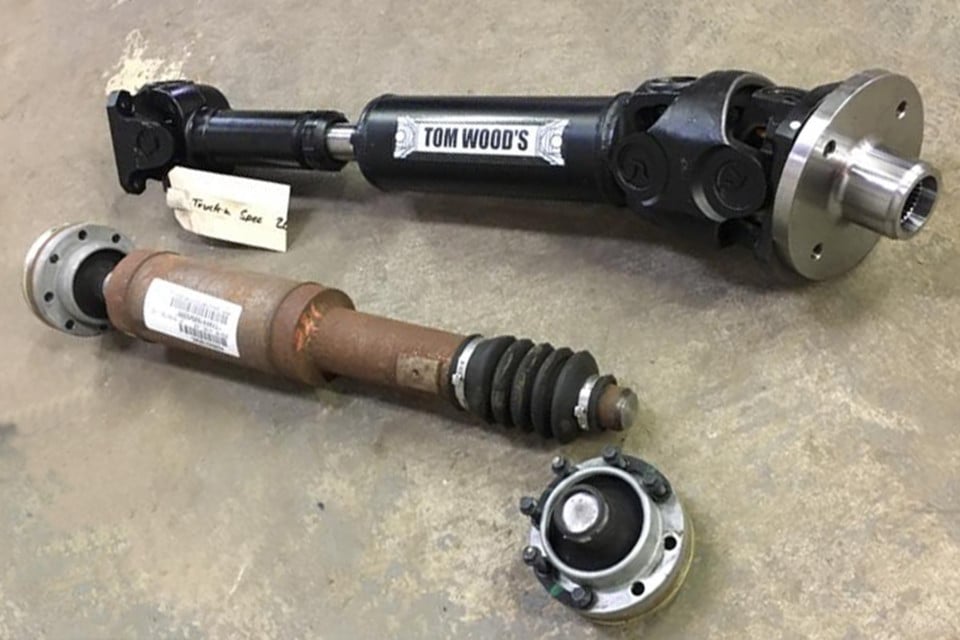
Depending on the final goal and purpose of the vehicle will depend on what to do with your driveshaft.
Pushing The Vehicle: A mall crawler and a vehicle racing King of the Hammers are on completely different sides of the spectrum and that plays into what time of U-joint and driveshaft each build should look at.
“If the driver is fairly mellow, doesn’t do extreme trails, isn’t towing, isn’t the most entertaining person on group trail rides; they are probably not going to break things,” Woods said. “If we are talking about someone approach to getting up tough obstacles is to stomp on the gas and hold on for dear life, to ‘Send it’ as they say; that person is going to need tougher equipment.”
Future Plans: This is one section that most people tend to skip over or look too much in the now. What the vehicle’s purpose is in its current state may only be temporary. We all have dreams of building the biggest and badest but don’t look at the steps that can be planned for the final stage. This will require multiple upgrades and more money in the long run.
“Sometimes you need to allow yourself room to grow,” Woods explained. “If right now you have a basic stock setup, maybe 33-inch tires and stock axles, but you have dreams of going to 37s or getting some one-ton axles, you should plan ahead. Don’t buy the driveshaft that is barely going to do the job now and then have to replace it when your build progresses. Buy the shaft that will still do the job when you have made all those planned changes.”
Where It Hits The Wallet
One part of a build that no one likes to talk about, how much is it? We all know that building a purpose-built off-road machine is not cheap, but there are areas where money can be saved and places where it is better to spend some extra cash to save spending more in the future.
The price of a 1310 series U-joint and its components are cheaper than 1350 series parts, but you need to consider all of the factors above when making the decision on what route to go. In the long run, the best decision is an educated one.
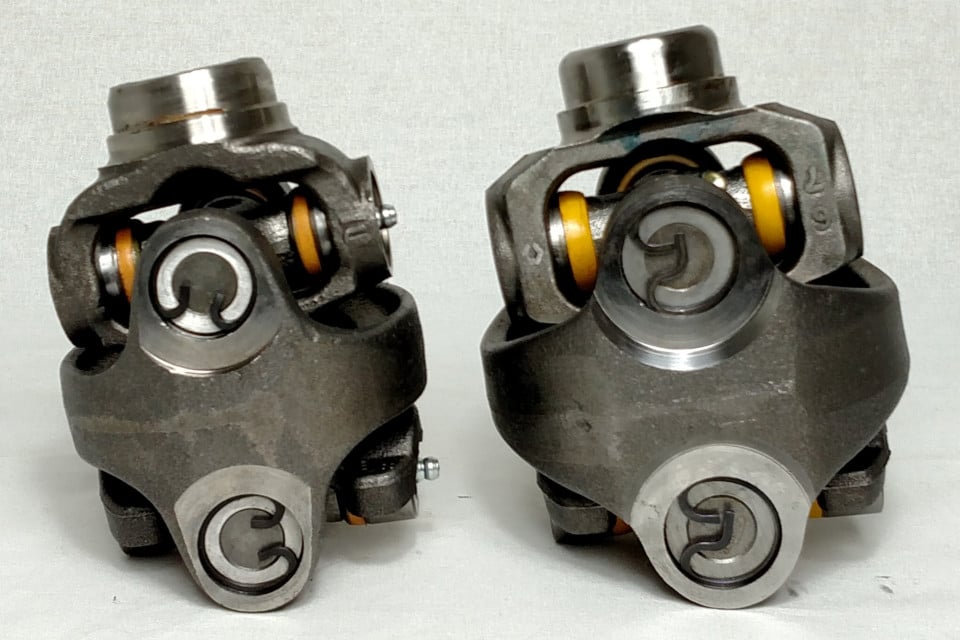
The visual difference is clear, a double Cardan 1310 shaft (left) compared to a double Cardan 1350 shaft (right).
“If we are talking a double Cardan shaft, a 1350 will cost about $170 more than a 1310,” Woods said. “After considering all the other factors it seems like 1310 will be adequate and you really don’t have the extra $170 laying around then stick with 1310. If the money is no big deal and you would rather have the peace of mind that comes with having things be a bit over-built, then upgrade to 1350.”
Jumping to a 1350 series driveshaft may include some hidden costs. Depending on the vehicle and its current setup new yokes may need to be purchased to allow for the new driveshaft to attach. You will need to budget in around $80 per yoke to make that happen.
“We are here to help, this is all a lot of information to digest,” Woods finished. “We have been doing this a long time and can help you navigate through all the different facets of making the right decision. Call us, tell us what you’ve got, ask us all your questions. We’ll always give you honest answers. Our goal is to help customers find the right driveshaft for their unique needs, never to ‘sell’ them anything.”
For more information on drivelines or if you are looking for a custom driveline for your rig, be sure to check out Tom Wood’s Custom Drive Shafts’ website.

